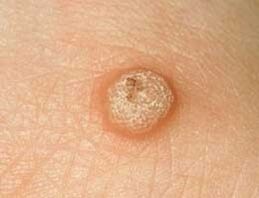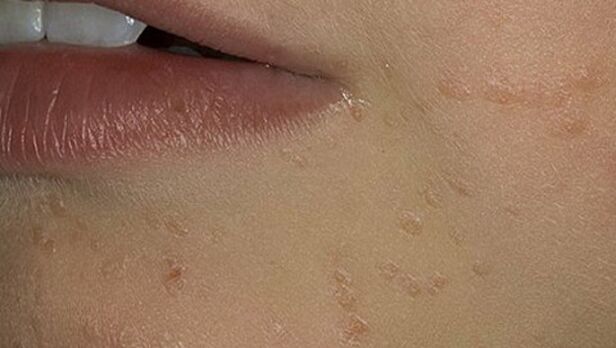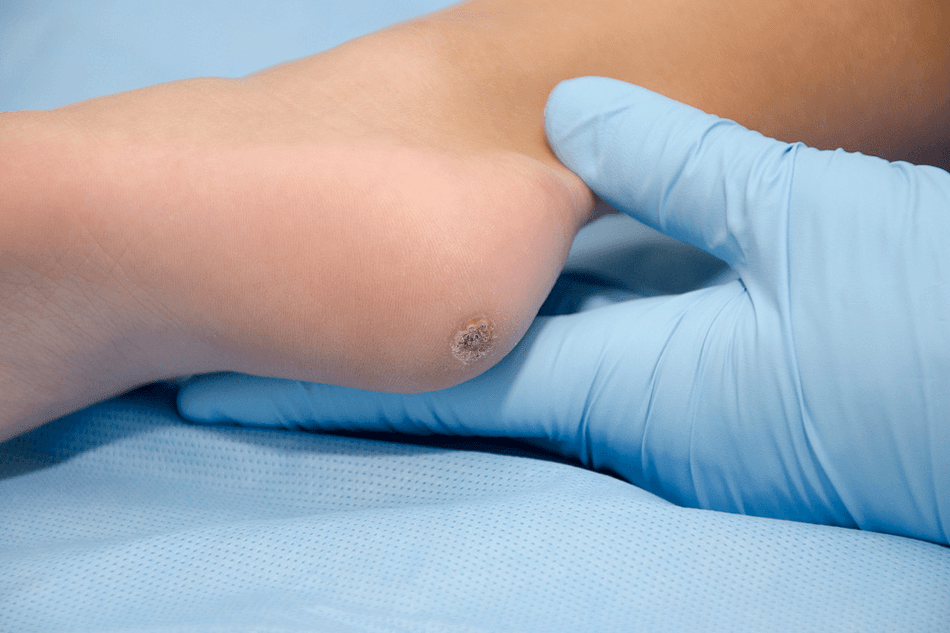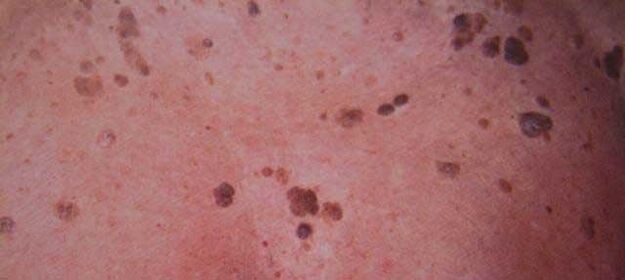Warts are benign (unlike malignant - without the formation of cancer cells) skin formation, which is formed under the influence of various representatives of the human papillomavirus (HPV) family, of which there are more than a hundred. There are no barriers to gender and age for warts: their prevalence is the same between the two sexes and does not depend on age.
Ways of infection and causes of warts

Papillomavirus is transmitted by contact: either by direct contact with the carrier (handshake), or through contaminated household items and the environment (in bathrooms, showers, swimming pools, etc. ). But do not shy away from a hand outstretched by a colleague or good friend: the condition for infection is an unfavorable combination of a number of factors:
- skin cracks and microtrauma, chronic scratching. Risk group - people who by the nature of their professional activities deal with wet cleaning or hand washing: have a lot of microtrauma to the skin;
- weak immunity (indicator - frequent colds);
- excessive sweating of the hands and feet.
If all went wrong, then the first wart will appear after 1, 5-6 months: this is the incubation period of a viral infection caused by HPV.
Types and symptoms of warts
Common warts (also called vulgaris).
Such warts make up 2/3 of the total number of warts on the skin. It's the same, these warts are characterized by age readability: they are often placed on children and younger students.
A favorite place to deploy warts are the hands (both palms and back), fingers, sometimes (which is very aesthetically unpleasant) the face. The appearance of a vulgar wart is very simple: a round seal knot, varying in size from a needle head to a small pea. The color does not stand out on the skin. Single warts are rare: there are usually several or an entire distribution. Moreover, one of the warts is the largest, it is the so-called mother wart. If you eliminate it, then the rest will go down on its own.
Flat warts (juveniles).

Another representative of the "young" warts that affect people aged 10 to 25 years. They are small flat papules that protrude slightly on the surface of the skin, having a smooth (sometimes scaly) surface. The color is fleshy, sometimes with a yellow tinge. Most often, flat warts are found on the back of the hands, wrists, face and neck. Sometimes - on the head of the penis.
plantar warts

These warts are distinguished by an added pain, which is felt especially while walking. Outwardly, plantar warts are difficult to distinguish from calluses. They can be either convex or concave. Plantar warts appear in harmony with their name - on the heels, in places with greater friction.
Senile warts (seborrheic).

A benign epithelial tumor formed over the years and appearing in old age is called senile wart. Initially it is a small brown spot, which, growing over time, reaches a diameter of 5-6 cm. . Senile warts (also called seborrheic keratomas) have a greasy, crusty surface. Over time, it thickens, its surface becomes covered with cracks and literally fills with a dark brown color. Senile warts form in closed areas of the body, but sometimes they annoy their unwanted owner on the face, neck and limbs.
Condylomas (genital warts)
These warts have a specific localization: genitals, perineum, vaginal opening and anus. They can occur in the armpits, under the female breast and in children - in the nasolabial folds. In appearance, they are often compared to turkey or cauliflower because of their lobe structure. The color of the warts is fleshy or pale pink, but if you rub them they become reddish and start to bleed. They form large colonies.
Diagnosis of warts
Diagnosing warts is not difficult, this is not rocket technology for you. Just look at the clinical manifestations of these unwanted growths. Plantar warts are distinguished from the banal calluses by the papillary structure of the first, genital warts from broad warts, which are a sign of secondary syphilis, by their denser consistency, broad base, and moist surface of the latter.
Treatment of warts
Warts are removed either medically or mechanically. Given their "viral essence", they are fought accordingly: antiviral ointments are prescribed. This will prevent the spread of warts in areas that have not yet developed. By popular methods, celandine milky juice, which stands out in the cutting of the plant, has become widespread.
Electrocoagulation (exposure to electricity + high temperature) helps to get rid of warts even in the most advanced cases.
Cryotherapy (liquid nitrogen cryodestruction) is very suitable for the treatment of vulgar warts. This procedure is practically painless, which makes it suitable for use in children.
Plantar warts are treated in a complex way: first - by cryodestruction, then - surgically, removing the affected area of tissue under local anesthesia.
Laser therapy is also used, using different types of rays. The affected area depends on this to evaporate or coagulate.
There are usually no specific problems with the warts, but relapses do occur. And in about half of the cases they go away on their own, without any treatment.
As a preventative measure, it may be advisable to respond immediately to the appearance of even a wart and take immediate measures to eliminate it.























